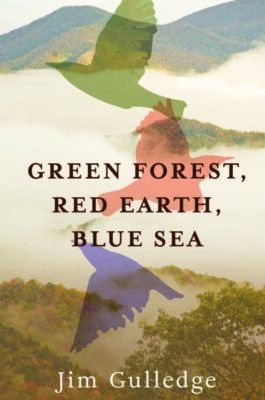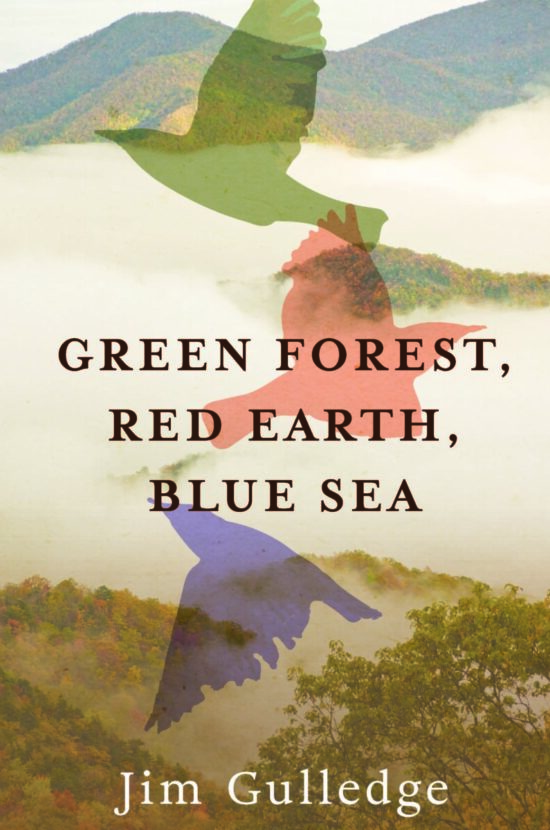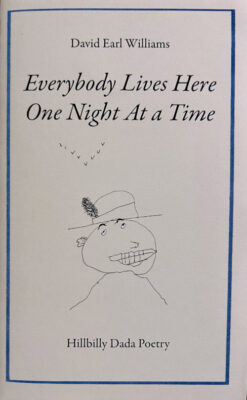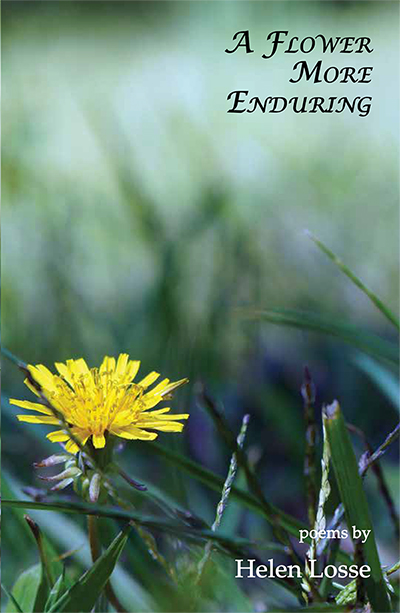Green Forest, Red Earth, Blue Sea by Jim Gulledge
… Okay, y’all, get ready. This book grabs hold of you and doesn’t let go. Jim’s answers to my questions about the publishing industry, his writing process, and more, follow the book discussion. I think ya’ll will gain some valuable insight from his responses.
Jim Gulledge’s breakout novel Green Forest, Red Earth, Blue Sea gives us an evocative tapestry of human connection, environmental harmony, and the complexities of life. Set against a vividly described natural backdrop, Gulledge masterfully blends poetic prose with deeply human themes, making this book as much a reflection on humanity’s relationship with nature as it is a journey of personal discovery.

The novel’s protagonists, whose stories unfold amid lush forests, expansive red earth, and the boundless blue sea, are richly drawn characters whose struggles and triumphs resonate universally. Gulledge’s skill lies in crafting characters that feel real and grounded while also serving as metaphors for broader themes like resilience, transformation, and the search for meaning. The supporting characters, too, bring depth to the narrative, each embodying distinct aspects of the human condition.
At its heart, Green Forest, Red Earth, Blue Sea is a meditation on interconnectedness — between people, cultures, and the environment. Gulledge doesn’t shy away from exploring challenging subjects, including loss, redemption, and the impact of human activity on nature. His ability to weave these themes seamlessly into the story speaks to his talent as a storyteller.
Gulledge’s prose is undeniably one of the novel’s standout features. His descriptions of the natural world are not only vivid but almost cinematic, transporting the reader directly into the story’s landscapes. The rhythm of his writing mirrors the ebb and flow of the ocean or the rustling of leaves in a forest, creating a sensory experience that lingers long after the last page is turned.
Green Forest, Red Earth, Blue Sea is a thought-provoking and beautifully written novel that appeals to both the heart and the mind. It’s a perfect read for those who appreciate literary fiction with a strong sense of place and a deep, reflective core. Whether you’re drawn in by the lush settings, the compelling characters, or the profound themes, Jim Gulledge’s work offers something to savor and reflect upon.
Highly recommended for fans of environmentally conscious fiction, lyrical prose, and stories that explore the human spirit in all its complexity.
I recently emailed Jim with a few questions about his writing process, his inspiration, and more. Enjoy.
A Conversation with writer Jim Gulledge
How has your geographic background influenced your writing style and the themes you explore in your novels?
This is a question we simply must ask all Southern writers, eh?
When I was a child, my world was exceptionally small. My mom, dad, three brothers and I lived in a two bedroom “starter” house in a lower-middleclass neighborhood in Rock Hill, South Carolina. However, when I was six, that world grew exponentially. Dad came home one day and announced that he and my Uncle Ed had bought a 236 acre run-down cattle farm about twenty miles outside of town. The weekly trips to the farm to work opened my senses to the natural world. Suddenly I was immersed in what seemed a vast wilderness populated by rabbits, hawks, foxes, snakes, fish, and eventually a couple hundred head of Angus cattle and a handful of horses. Since I was the smallest, youngest worker in the family, Dad would often bushhog fields all day and just turn me loose with a small 410 shotgun to wander the fields, forests and creek beds of the farm.
For lack of a better word, I learned to “see” on these rambles: the movement of clouds, the effects of wind, crawdads under rocks and blackberries hidden deeply in chigger-protected briar patches. The Earth came alive to me. Later on, often restricted to the Carolinas by the amount of gas in my Buick, I found mountains, waterfalls, vast cotton and tobacco fields, and the Atlantic Ocean. Even as a teen, the diversity stunned me. On one trip, I rafted down the Nantahala River and the next day stood chest deep in the surf of Holden Beach marveling that two such places could exist on the same planet much less within the same state. Later in life, I would travel modestly to other parts of the country and world, but for me wonder was born in my youth in the Carolinas. When I eventually began to write, I was told to “write what you know.” For me, in large part, that is the Carolinas.
What themes or messages are most important to you in your work, and how do you weave them into your stories?
Remembering Moss Hart’s admonition that “if you have a message, call Western Union”, I try not to write to particular themes or messages, but they invariably emerge. I read a quote from a filmmaker a number of years ago that “all story worth telling is ultimately about redemption”. The more I have thought about it, the more true the statement is, at least for me. So much of the literature of the 20th century revolves around the more jagged aspects of the human condition, but with no prospects for change or escape. Darkness, despair, failure, and angst are captured in teeth-grinding detail, but love, play, music, joy, humor and dance escape the net. The end result for me of reading such books is that, pardon the crudeness, “life is indeed a bitch and then you die”. I will have to leave those tales to others. I think it’s my Christian faith in an often Post-Christian culture that compels me to try to be both honest and hopeful about the human condition. This wins me few friends with my writing because my pagan friends find my stories too “religious” and my religious friends find them too “pagan”. Regardless, I find the world to most resemble C.S. Lewis’ shadowlands. Not light or darkness. Light AND darkness.
I think another major theme in my work is the past. During my youth I was always fascinated by the stories of the older members of my family about WWI, the Depression and WWII. Also, I was draw to older objects in the cedar chest of our home: a family Bible with fifteen dollars of Confederate money inside, a small gold pocket watch that belonged to my grandmother and WWII mementos from my dad’s service on Guam. In recent years, I have done a deep dive on the larger history on both sides of my family , and have been shocked by how much had been forgotten. The issue of memory and loss of memory is a prominent theme in Green Forest, Red Earth, Blue Sea. I am also fascinated by Biblical literature and mythology and often recycle names or plot lines from these ancient stories. A few decades ago, most people would have been familiar with these allusions, but in large part now I think most of them go unrecognized … and unappreciated. I am somewhat of a relic using my last years trying to capture things that I consider valuable and pass them on to others who may or may not be interested.
In my novel, I chose to tell the story in three parts. The first, “A Poor Man’s Supper”, takes place in the mountains during Reconstruction. Part two, “Peachland”, skips forward fifty years to the Piedmont during WWI and the Depression, and the conclusion, Wild Horses”, takes place on the coast during the 1970’s. This gave me the opportunity to showcase each of the major geographic regions of North Carolina. It also gave me a chance to show the corrosive effect of time on family memory, People are always saying , “But how did my family forget its past”? Green Forest , Red Earth , Blue Sea is an attempt to address that question. This format also provides a canvas to create an increasingly complex commentary on the conflict between good and evil. In part one, these two forces are almost cartoonish in their separation. In part two, evil is not just an individual force but the corruption of society. By the conclusion even the “good” people are seen to have struggles of their own.
Do you outline your plots before you start writing, or do you let the story unfold naturally?
Oh, if only my brain were so linear. My last book started with a voice in my head at my Aunt Lois’ funeral that said, “This is where the story begins.” But it didn’t begin for over two years. When it finally started, the cemetery scene was two thirds of the way through part one of the novel. NOT at the beginning. Writing for me begins with a “voice”. When it talks, I write what it says. When it stops, I have to stop… sometimes for days, weeks or months. Every time that I have tried to force the story forward in frustration, I eventually ended up throwing every word of that material out. This is the only way that I am able to write fiction, and I do not recommend it as a path to productivity. Thank God I had my day job to pay the bills. I felt very weird about my process until I heard my beloved Lee Smith describe a very similar writing “trance” to D.G. Martin on North Carolina Book Watch one morning. Lee Smith also had a day job at N.C. State.
The marvelous thing about my writing process is that characters and events emerge from somewhere “ex nihilo” out of nothingness. Or they are shared from the mind of God as part of the human experience of being made “Imago Dei”, in the image of our Creator. You decide. Either way to me, it is a mystery and a privilege to be part of the writing process.
What is your approach to editing? Do you self-edit as you go, or do you complete a full draft before revising?
I would love for my editor, Joe, at Koehler Books to answer this one. Poor Joe. I am a decent storyteller, but a TERRIBLE self-editor. I do not edit as I write, and I barely edit afterwards. First, I have a type of proofing blindness and most often cannot see my errors and excesses. Second, once I have “birthed” words, I have a very hard time throwing them away. I am a writer who needs a professional editor with a cool head and a steady hand. To me, story telling and editing are two distinctly different gifts. Maybe some writers get both. I was not so lucky, but by my second book I had been humbled to realize that no book ever makes it to the public solely on the author’s steam. Eventually, you will need an editor, photographer/graphic artist, web designer, publisher, promotion advisor, etc. The author is just one part of the team.
Can you share your experience with the publishing process? Do you have any advice for aspiring authors looking to get published?”
Yes, but most aspiring authors are not going to like what I have to say. Here is my formula for book success in these times: be young, good-looking, marketable (the whole package), highly productive, in touch with the general public’s tastes, and armed with an effective agent who can get you an audience with one of the Big Five publishers. Sadly, I meet none of those criteria, and my sales numbers show it. Eighty plus percent of books in big box or independent bookstores come from the Big Five. They discount their titles 40% or more to bookstore owners and have a cadre of employees whose full-time jobs are to promote their titles for sale. If you can’t break into the Big Five you are left with a large number of often highly reputable micro, small and medium publishers who may do a great job prepping your book, but probably do not in most cases have the muscle to make your book highly profitable. There are also a host of self-publishing options available to writers today. The good news is that you have a better chance these days of eventually seeing your story in print. The bad news is that you most likely will not make much money, and you may even lose some. The questions are whether you have a risk tolerance and a passion for writing.
Publishing is a business… and a risky one even for the Big Five. How important is your story to you? Many people spend money on cars, trips, pets, etc. that they will never see again. Where does your book fall in your values and priorities? Is your pet a failure because you will never make money off of it? How about your story ? — Jim Gulledge, you’ve got that right. Thanks for your valuable insight. And to my dear Mule readers — Jim’s novel entertains but it also asks questions. Grab a copy from wherever you buy books. I’m reading the Kindle edition.
Koehler Books publisher website

–Valerie MacEwan, Editor & Publisher







